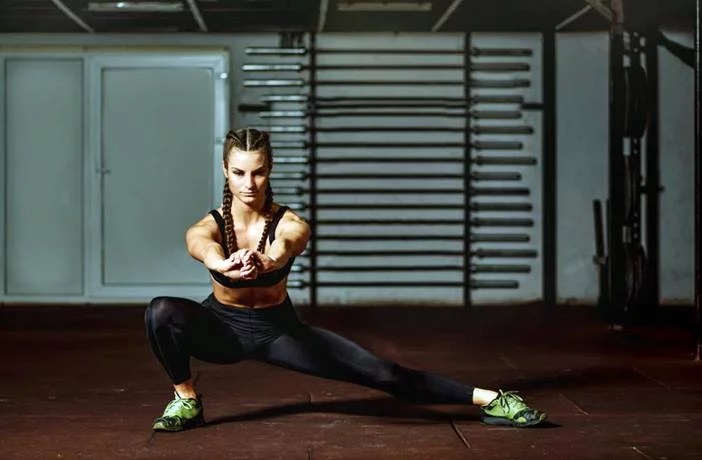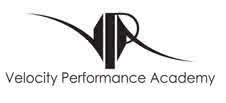Many athletes neglect their adductors. Weightlifters often focus on their quads, glutes, hamstrings, and, to a lesser extent, their calves.
But when your inner thighs are sore or tight, your adductors make their presence felt. Why put up with such potential physical ailments when, instead, you could just pay more attention to your adductors?
What Are Adductors?
The adductors are a group of muscles on the inside of the thighs, and their main function is to bring the legs together and rotate the hips towards the midline of the body.
The adductor muscle group is made up of these muscles:
- Short adductor
- Long adductor
- Adductor magnus (including adductor minimus)
- Pectineus: the most anterior adductor of the hip, allows flexion of the hip.
- Gracilis: the thin, flat muscle on the medial surface of the thigh.
- External obturator: the muscle that covers the external surface of the anterior wall of the pelvis.
The adductors originate from the pubis and ischium bones (lower part of the pelvis) and attach to the medial posterior surface of the femur (thigh bone).
What Are Adductors For?
The main role of the adductor muscles is to adduct (move toward the midline of the body) the hips and thighs. In other words, if your legs are open, they help bring them back together. They are also prime movers to help you get out of a deep squat.
The adductors are often trained on the adductor / abductor machine, and other important functions of the adductor muscles include:
- Hip flexion
- Internal and external hip rotation
- Hip extension
- Stabilization of the pelvis
- Knee flexion
Why Are Adductors Important?
Prevent Injuries
Training the adductors directly can better prevent strains in the groin. And if you’re an athlete competing in a sport that requires you to run or change direction, adductor strength should be one of your priorities.
A review published in the British Journal of Sports Medicine in 2015 concluded that hip adductor strength was one of the most common risk factors for groin injuries in sport (1).
A study of professional ice hockey players found that they were seventeen times more likely to sustain a groin injury if their adductor strength was less than 80% of their abductor strength (2).
Hip Extension and Flexion
Although this may be obvious, your hips flex and extend during many common movements like jumping, running, squatting, and deadlifting. Having an explosive hip extension is one of the differences that separates good athletes from great athletes.
The glutes and hamstrings are the primary extensors of the hip, but the adductor magnus (adductor magnus muscle) also helps with hip extension. If you’ve ever felt like your adductors are sore after a hard day on the legs, now you know why.
Improve Rotational Power
The ability of the adductors to internally and externally rotate the hips is directly related to the power of rotation. Therefore, athletes whose sports require rotational power to perform well will benefit greatly from strengthening their adductors.
Here is a short list of sports where the main movement is a swing or throwing movement, both of which are inherently rotational:
- Golf
- Tennis (and any other sport that uses a racket)
- Hockey (both ice and field)
- Baseball
- Soccer
- Lacrosse
4 Exercises for Strong Adductors
Here are four accessory exercises to make sure your adductors get the attention they deserve:
Single Leg Glute Bridge with Compression
This exercise trains the adductors of the straight leg while training the hip extension of the other. Squeezing the foam roller in this case or a medicine ball ensures that the glutes engage the hip extension rather than the lower back.
Try doing 3 sets of 8-12 reps on each leg after your main strength move for the day.
Cossack Squat
This type of squat trains the adductors and abductors while working in the frontal (horizontal) plane. It’s great to train the body to move in different directions, as most strength exercises work along the sagittal (vertical) plane.
This move is a perfect warm-up exercise before leg day. If you feel strong and comfortable enough, feel free to add weight.
This is not a maximal strength workout, so don’t go crazy with the load. Do 3 sets of 8-12 reps to feel your inner thighs when you wake up the next day.
Copenhagen Side Plank
This variation of the side plank on the floor involves holding a side plank where the top leg tries to adduct against a bench. You should feel your oblique stepping in and becoming more active to maintain stability while maintaining adductor stability.
Instead of doing it for a set time, take 3-5 breaths on both sides.
Rotating Throw of The Medicine Ball Against the Wall
Any spinning medicine ball shot will do the trick here; the spoon toss is one example of many. This drill is a great starting point if you’ve never done rotary throws before.
Medicine ball throws are a lot of fun and can add power to your workout.
Choose the size of the medicine ball with a head because if it weighs too much, you will end up training strength, not power. Make sure to generate power from the hip of the back (internal rotation) and not from the arms.
Do this before your strength training during the day for 2-3 sets of 6-8 reps on both sides.












